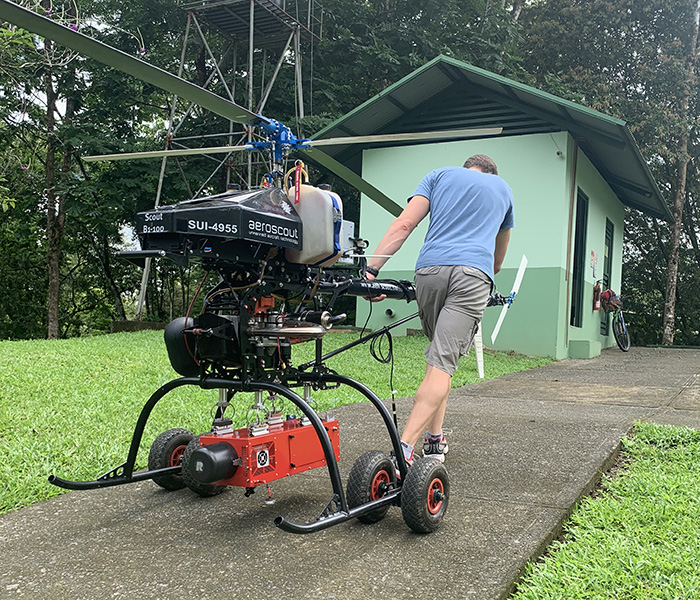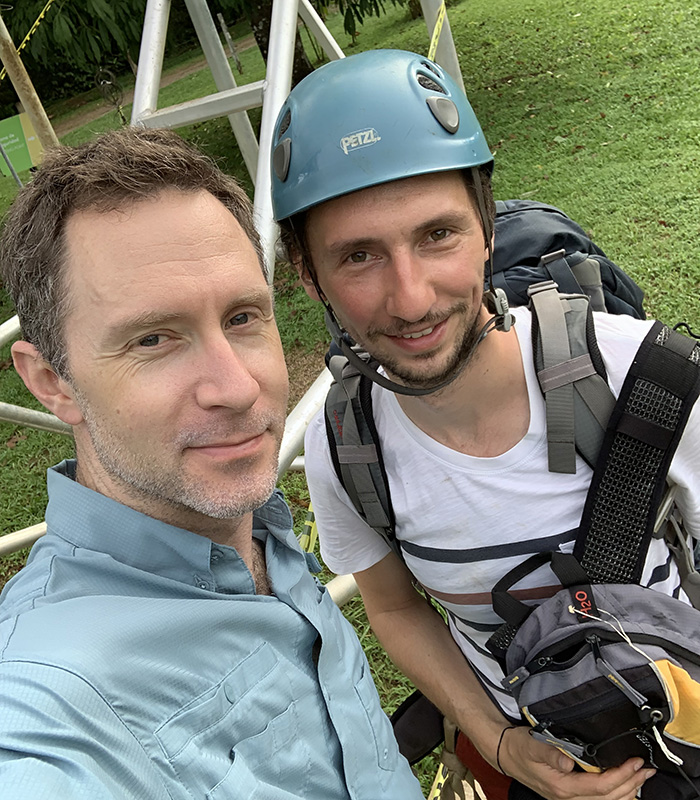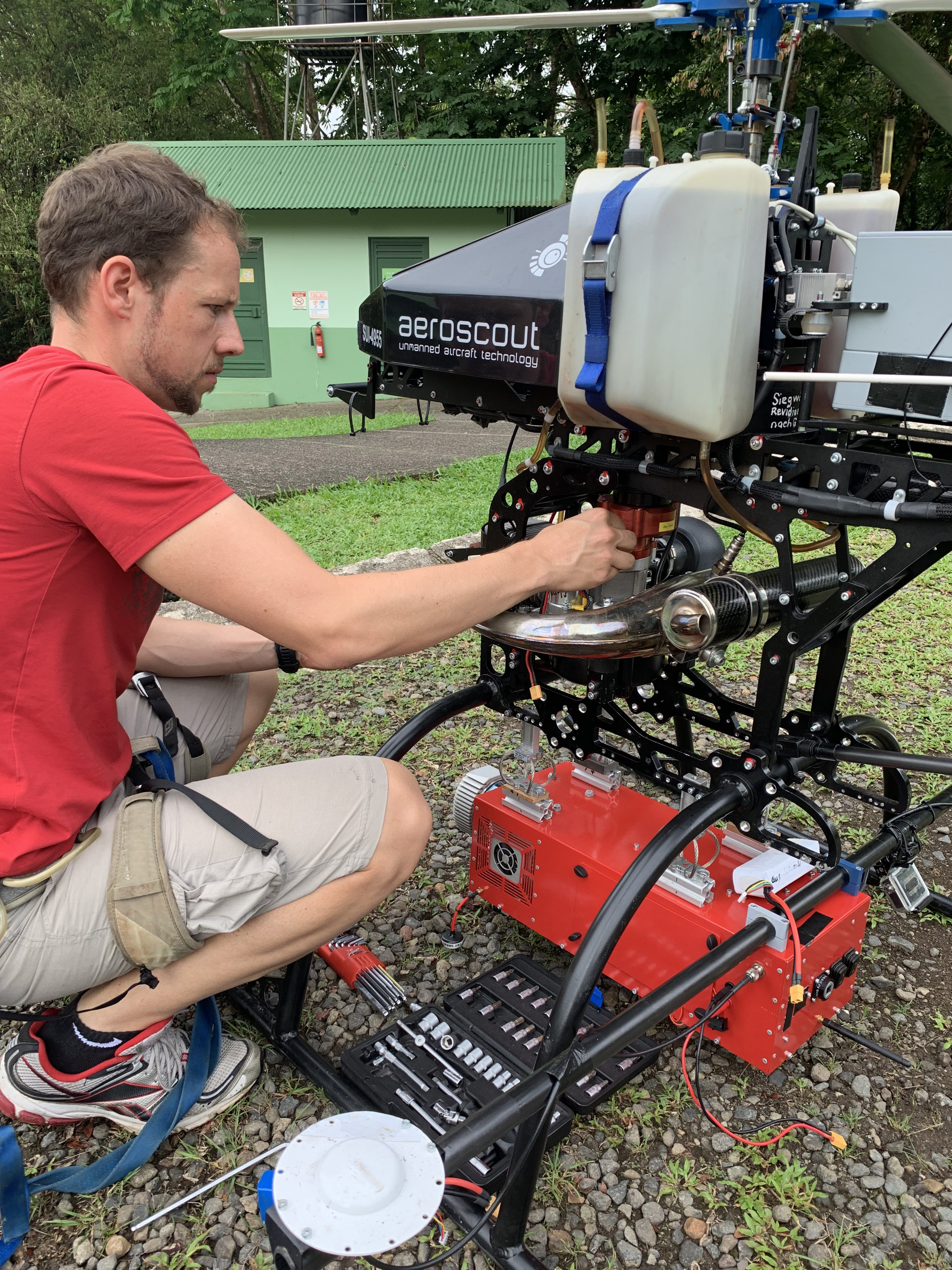The Brown Platform for Autonomous Remote Sensing (BPAR) is a suite of sensors carried by a heavy-lift helicopter developed by the Swiss company Aeroscout GmbH. The BPAR sensor package includes visible and near infrared (VNIR) and shortwave infrared (SWIR) imaging spectrometers that cover the 400 – 2500 nm region of the solar spectrum, and a chlorophyll fluorescence imaging spectrometer that measures the 670 – 780 nm region at 0.05 nm. The sensor package contains a high-resolution digital camera, an airborne laser scanner, and GPS-IMU navigation technology. During flight operations we collect an independent global navigation satellite system (GNSS) data stream on the ground. We use this data stream to differentially correct in-flight GPS-IMU measurements.
Flight Operations
The aircraft and sensors are operated by three people. A certified pilot in command (PIC) is responsible for takeoff and landing under manual control. The PIC has access to a forward-facing video camera that is mounted on the front of the aircraft. The PIC can operate the aircraft using hand controls by line-of-sight or using a video-feed to the forward-facing camera. Upon reaching altitude, the PIC communicates with the ground-station pilot (GSP) by radio. The GSP interacts with the flight-control system over an 868 MHz data link that provides information about location, altitude, speed, heading, engine performance, and exhaust characteristics.
The GSP is responsible for engaging the flight-control system to initiate autonomous flight, after which the aircraft will visit a set of locations in a specified order at a specified altitude and speed under autonomous control. During the flight, a payload operator (PO) communicates with on-board sensors over a 2.4 GHz data link to monitor the data collection in real-time. The PO can communicate with the PIC and GSP to request changes to the flight plan when needed. When the mission is complete, the aircraft will return to a specified location and hover, awaiting further instructions from the PIC.
The aircraft was designed and developed by Aeroscout GmbH. We operate in one of two configurations. The B100 can support an 18 kg payload for 1.5 hours at sea level. The larger B330 can carry a 30 kg payload for 3 hours at sea level. Both aircraft operate under certificate of the Swiss Civil Aviation Authority (BAZL). We operate outside the United States in compliance with US export regulations, and beyond visual line of sight in compliance with civil aviation authority. The BPAR has completed successful flight operations in Central America, Switzerland, and the Czech Republic, and has currently planned flight campaigns in Costa Rica and Kenya. These efforts support fundamental research in plant biology and the carbon cycle, conservation, and the calibration and validation activities of the NASA Global Ecosystem Dynamics Investigation.





